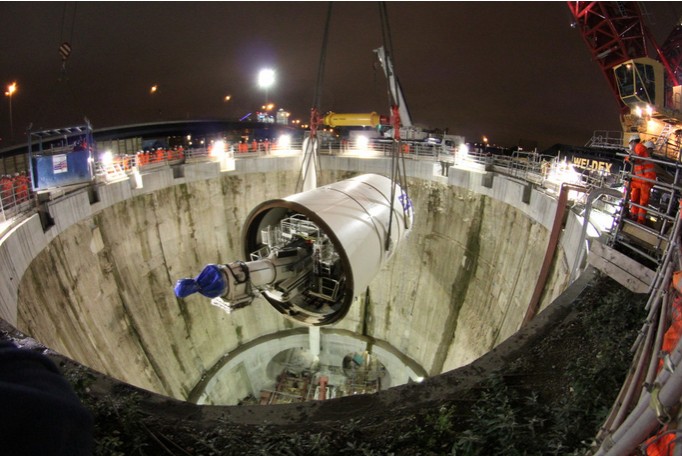September 2015
Breakthrough at Crossrail tunnel
Crossrail’s tunnelling marathon under London is now completed. The Crossrail tunnelling started in May 2012 and was finished at Farringdon with the arrival of the tunnelling machine Victoria in May 2015
Over the last three years, eight 1,000 tonne tunnelling machines have bored 42km of new rail tunnels under London.
Teams of dedicated workers have been working 24 hours a day to complete the tunnels for Europe’s largest civil engineering project – with the aim to upgrade the existing rail network and build major new stations in central London and Docklands.

The tunnels weave their way between existing underground lines, sewers, utility tunnels and building foundations from station to station at depths of up to 42m.
Nearly 70 million working hours have been completed on the Crossrail programme so far. Some of them were performed by VMT employees.
VMT GmbH configured a comprehensive package with customized navigation and control systems for tunnel excavation in London in close cooperation with the project partners. The VMT systems monitored and regulated parameters and interfaces needed for tunnel construction, therefore supporting project management in process control and quality assurance.
The laser based navigation system TUnIS measured the position of the 7.8 metre TBMs in relation to the designed tunnel alignment to the nearest millimetre. TUnIS transmitted the measured data to monitors for the TBM operator, responsible for precisely navigating the TBM underground. The TUnIS software also incorporated a ring sequencing module to assist in ring selection:
Depending on elements such as alignment radius or location of cross passage construction, the ring sequencing module recommends which segment type to build. The ring sequence calculation takes into account the data delivered by VMT’s Automatic Tailskin Clearance Measurement System SLuM.
Additionally the Integrated Risk and Information System IRIS provided an efficient tool for data management for this huge project: IRIS collects and analyses all relevant tunnelling data and stores them within a central database – thus assisting overall management of the construction site.
